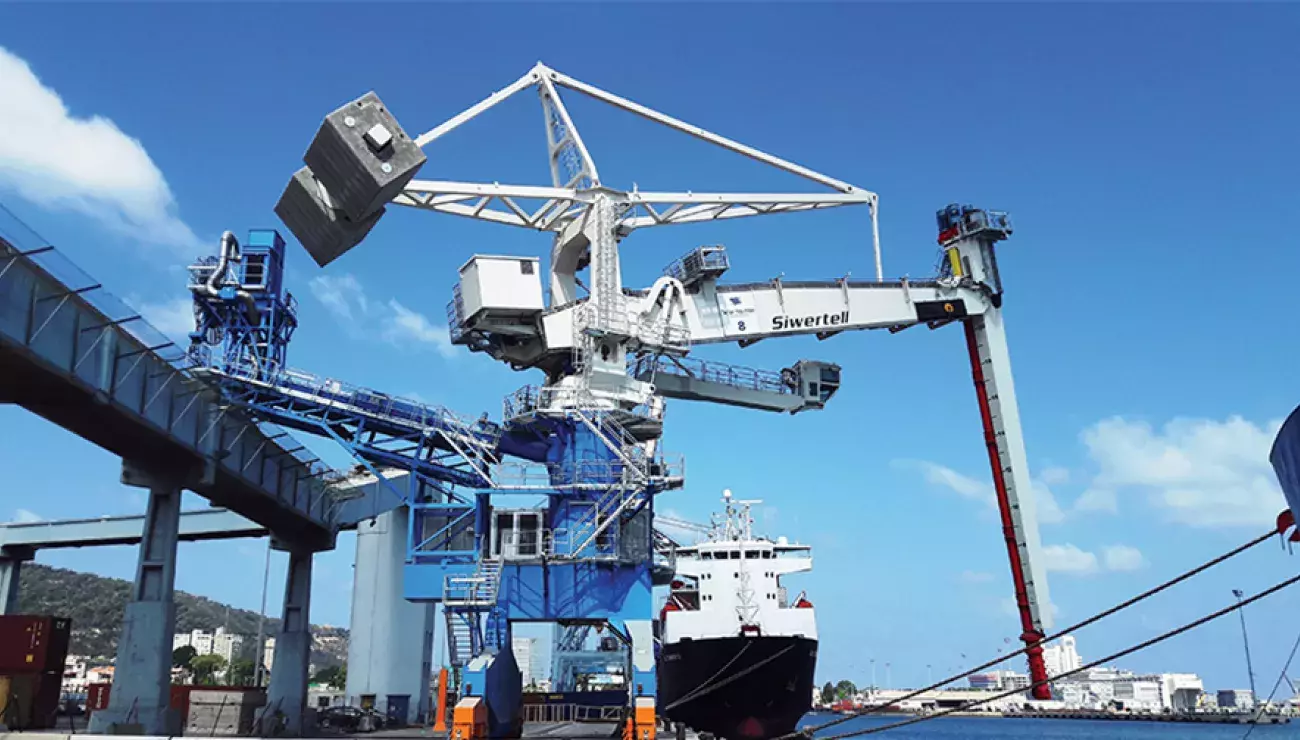
Dedicated grain terminal keeps Israel’s foodstuffs flowing
5 Jul 2021The past decade has seen Israel’s port facilities undergo a gradual transformation; terminals are replacing outdated dry bulk handling equipment, and in its place, modern systems are offering vastly improved efficiencies, reliability and environmental protection.
In 2005, to manage the country’s port developments, the Israeli Government created state-owned companies: the Israel Ports Company; Haifa Port Company; and Ashdod Port Company. Two privately-owned organizations also operate in the country, Eilat Port and the Israel Shipyard Port in Haifa.
20-year high
Israel imports around five million metric tons of grain annually, and around 70 percent of that passes through Haifa, one of its oldest ports. It is situated on the southern shore of Haifa Bay, on the Mediterranean Sea, about 90km north of Tel Aviv. The port serves Israel’s third-largest city and everywhere north of Tel Aviv, whereas Israel’s largest port, Ashdod, predominantly serves the regions south of Tel Aviv.
In line with a population rise, last year, Haifa set a record of importing about three and a half million metric tons of grain. Over the coming years, it is likely that Ashdod will expand its grain handling capabilities following the completion of bridge works, which will see it directly connected to the quay, making it a port terminal. Until then, the majority of grain imports falls to Haifa.
With over 6,700m of quay length, there are several specialized bulk handlers within the port, and operating in its central main area, which was built in 1933, is the Dagon grain terminal; the only one of its kind in the country. Managed by Dagon Israel Granaries Company and owned by Israel Ports Company (IPC), it handles wheat, milling wheat and seed wheat, maize, corn, barley, rapeseed, sorghum, and soya beans.
The grain terminal is critical to the country’s agri-bulk imports and in the past five years, the terminal has gone from unloading 125 to 169 vessels per year. Vessels are discharged and their shipments are transferred via a series of conveyor belts protected by a concrete bridge, to silo storage. Dagon has a storage capacity of around 85,000 metric tons, and about 22,000 metric tons of stored grain can be moved from the silo to railcars or trucks each day. At its peak import volume, the silos undergo about 40 cycles a year. Except for religious days, they operate on a 24-hour-a-day basis.
A good replacement
Given its importance, maintaining the terminal’s grain handling systems is a significant responsibility. After many years of service, IPC was looking to replace its locally built, double belt-type unloader and two smaller pneumatic unloaders.
“IPC was having to manage increasing volumes of grain imports,” explains Bertil Andersson, Sales Manager, Bruks Siwertell. “Also, its existing equipment had simply reached the end of its service life and needed replacing. IPC was looking for an equivalent capacity, but from a single unloading system, which could replace its older systems, and one that offered a competitive edge when it came to grain. The company turned to consider Siwertell screw-type unloader technology.
“There were some initial challenges,” Andersson continues. “This is an extremely busy port, and grain shipments cannot wait. So, these types of installations usually require operations to be ongoing. Also, new equipment contracts like these, not only need to fit into existing infrastructure, but have to work seamlessly with downstream conveying systems. All of these add to the complexity of replacing older equipment within existing, hard-working terminals.
“In addition to these factors, IPC was on a tight budget and looking for value-for-money, comparing capacity with costs to find the best solution,” he notes.
IPC required any new equipment to have a continuous rated capacity of 1,200t/h and, following a comparison process of other available systems, it decided that a new Siwertell 640 M-type, rail-mounted ship unloader offered the best through-ship capacities on the market.
Siwertell unloader debut
It was the first time that Bruks Siwertell had installed a high-capacity unloader in Israel and, as with any new delivery, the company had to ensure that it understood and complied with local laws and regulations. “One of these was having to meet a 20 percent ‘local content’ commitment in the contract,” Andersson explains. “These ensure that regional companies are not negatively impacted by foreign investment.
“It took about 18 months, but this process was really important to work out and develop the best solution for the grain terminal, and in 2018, Bruks Siwertell delivered the new ship unloader.”
It provides a through-ship capacity of 1,200t/h and can handle vessels up to 73,000 dwt. “The unit was commissioned in 2018, comfortably replacing the capacity of the terminal’s old equipment and greatly reducing the number of days that vessels were required to be in port,” notes Andersson.
Four years on and the terminal is going from strength to strength; meeting the owners’ expectations and comfortably able to handle the grain import volumes that arrive at the terminal.
“The operator benefited from free service support for two months during the warranty period, along with a service commitment to deliver fast, effective assistance during the unloader’s first year of operation,” he notes. “Since then, all the recommended preventative maintenance has been carried out, and we have been on hand to offer service as and when IPC has needed it.”
PLEASE CONTACT US FOR MORE INFORMATION

Sales Manager, Northern Africa & Europe
Bertil Andersson
+46 705895920
 Bruks-Siwertell
Bruks-Siwertell